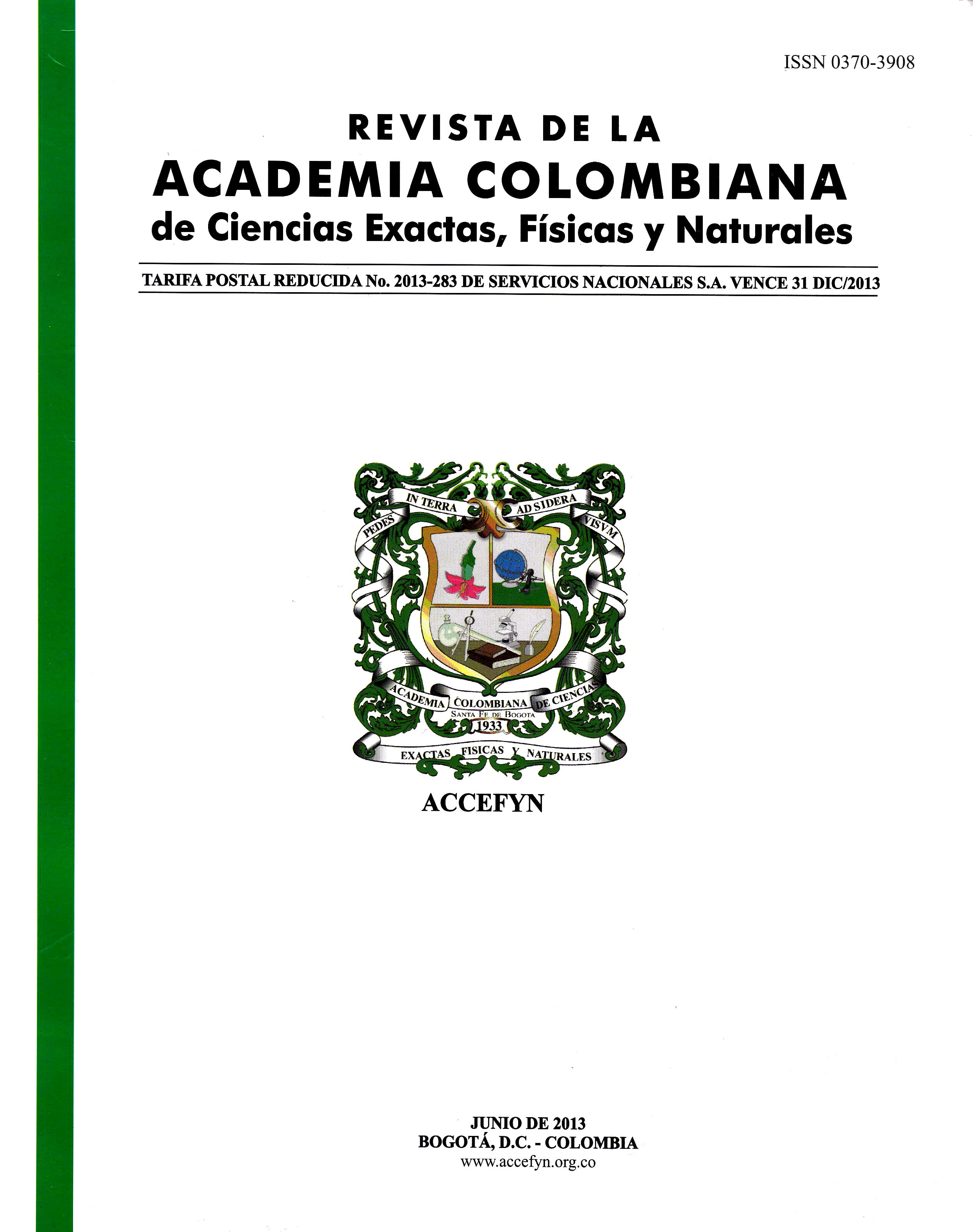Resumen
MSA-2 proteína 2 de superficie de membrana del merozoito es una proteína de 45-kDa anclada en la membrana del merozoito que ha sido asociada con el desarrollo de inmunidad protectiva en contra de la malaria.
Se construyó un espacio de probabilidad que cuantifica la posibilidad de aparición de los 20 aminoácidos en cada posición para péptidos con tamaño de 20 residuos; para 3 secuencias sobrelapadas cada 10 aminoácidos de la proteína MSA-2 comprobadas experimentalmente de alta unión, partiendo de éste espacio se calculó la probabilidad, sumatoria de probabilidad y entropía para todas las secuencias de la proteína, con el fin de diferenciar de forma objetiva y reproducible los péptidos de alta unión y baja unión, por medio de teorías físicas y matemáticas.
Se encontraron rangos para la probabilidad, Sumatoria de Probabilidad y Entropía asociados al macroestado unión y al macroestado no unión, que permiten diferenciar de forma objetiva y reproducible los péptidos de alta unión de los que no lo son acertando en el 100% de los casos estudiados según trabajos experimentales.
Referencias
A. Matvéev. Física molecular, MIR, Moscú, 1987.
A. Mood, F. Graybill y D. Boes. Introduction to the theory of statistics, 3rd Ed, Mc. Graw-Hill, Singapore, 1974.
B. Fenton, J.T. Clark, C.F. Wilson, J.F. McBride y D. Walliker. Polymorphism of a 35±45 Kda Plasmodium falciparum merozoite surface antigen, Mol. Biochem. Parasitol. 34 (1989) 79-86.
B. Zhao, K. Sakharkar, C. Lim, P. Kangueane y M. Sakharkar, MHC-Peptide binding prediction for epitopes based vaccine design, IJIB 2 (2007) 127-140.
C. Lundegaard, O. Lund, C. Kes, S. Brunak y M. Nielsen. Modeling the adaptive immune system: predictions and simulations, Bioinformatics 23 (24) (2007) 3265-3275.
E. Froden y J. Royo. Entropía e Información, Universidad de Chile, Facultad de Ciencias, in Internet: http://fisica.ciencias.uchile.cl/ ~gonzalo/cursos/termo_II-04/seminarios/alumnos/EntropiaInfo_ Frodden-Royo04.pdf
F. Rañada. Orden y Caos, Introducción, Prensa científica, Barcelona, 1990.
G.E. Meister, Caroline G.P Roberts, Jay A. Berzofsky y Anne S. De Groot. Two novel T cell epitope prediction algorithms based on MHC-binding motifs; comparison of predicted and published epitopes from Mycobacterium tuberculosis and HIV protein sequences, Vaccine (1995) Volume 13 Number 6, 581-591.
H.A. Stanley, R.F. Howard y R.T. Reese. Recognition of a Mr 56K glycoprotein on the surface of Plasmodium falciparum merozoites by mouse monoclonal antibodies, J. Immunol. 134 (1985) 3439- 3444.
H.G. Heidrich, W. Strych y J.E. Mrema. Identification of surface and integral antigens from spontaneously released Plasmodium falciparum merozoites by radioionidation and metabolic labeling, Z. Parasitenkd 69 (1983) 715-725.
P. Prehm. Spontaneously released Plasmodium falciparum merozoites from culture possess glycoproteins, Z. Parasitenkd. 70 (1984) 747-751.
J. Rodríguez Velásquez. Teoría de conjuntos aplicada a la caracterización matemática de unión de péptidos al HLA clase II, Rev Cienc Salud 1 (2008b) 9-15.
J. Rodríguez. Caracterización física y matemática de péptidos de alta unión de MSP-1 mediante la aplicación de la teoría de la probabilidad y la entropía. Archivos de Alergia e Inmunología Clínica 39 (2008a) 2:74-82.
J. Rodríguez. Comportamiento fractal del repertorio T específico contra el alergeno Poa P9, Rev. Fac. Med. Univ. Nac. Colomb. 53 (2) (2005) 72-8.
J. Rodríguez. Diferenciación matemática de péptidos de alta unión de MSP-1 mediante la aplicación de la teoría de conjuntos, Inmunología 27 (2) (2008c) 63-68.
J. Rodríguez. Teoría de unión al HLA clase II, Teoría de la probabilidad combinatoria y entropía aplicadas a secuencias peptídicas, Inmunología 27 (4) (2008d) 151-166.
J.A. Lyon, A.W. Thomas, T. Hall y J.D. Chulay. Specificities of antibodies that inhibit merozoite dispersal from malaria infected erythrocytes, Mol. Biochem. Parasitol. 36 (1989) 77-86.
J.A. Lyon, J.D. Haynes, C.L. Diggs, J.D. Chulay y J.M. Pratt-Rossiter. Plasmodium falciparum antigens synthetized by schizonts and stabilized at the merozoite surface when schizonts mature in the presence of protease inhibitors, J. Immunol. 136 (1986) 2252-2257.
J.T. Clark, S. Donachie, R. Anand, C.F. Wilson, H.G. Heidrich y J.S. McBride. 46 ± 53 Kilodalton glycoprotein from the surface of Plasmodium falciparum merozoites, Mol. Biochem. Parasitol. 32 (1989) 15-24.
L. Blanco. Probabilidad, notas de clase, Universidad Nacional de Colombia, Departamento de Matemáticas y Estadística, 1996.
M. Aikawa, L.H. Miller, J. Johnson y J. Rabbege. Erythrocyte entry by malarial parasites, J. Cell. Biol. (1978) 77-72.
M. Ocampo, M. Urquiza, F. Guzmán, L.E. Rodriguez, J. Suarez, H. Curtidor, J. Rosas, M. Diaz y M.E. Patarroyo. Two MSA2 peptides that bind to human red blood cells are relevant to Plasmodium falciparum merozoite invasion, J. Peptide Res. 55 (2000) 216-223.
P. Laplace. Ensayo filosófico sobre las probabilidades, Altaya, Barcelona, 1995.
R. Ramasamy. Studies on glycoproteins in the human malaria parasite Plasmodium falciparum. Identification of a myristilated 45 Kda merozoite membrana glycoprotein. Immunol. Cell. Biol. 65 (1987) 419-424.
R. Tolman, Principles of statistical mechanics, Dover, New York, 1979.
R.J. Epping, S.D. Goldstone, L.T. Ingram, et al. An epitope recognized by inhibitory monoclonal antibodies that react with a 51 kilodalton merozoite surface antigen in Plasmodium falciparum, Mol. Biochem. Parasitol. 28 (1988) 1-10.
R.P. Feynman, R.B. Leighton y M. Sands. Física, La teoría cinética de los gases, Vol. 1, Addison-Wesley Iberoamericana, Wilmington, 1964b, pp. 39-1, 39-16.
R.P. Feynman, R.B. Leighton y M. Sands. Física, Leyes de la Termodinámica, Vol. 1, Addison-Wesley Iberoamericana, Wilmington, 1964c, pp. 44-1, 44-19.
R.P. Feynman, R.B. Leighton y M. Sands. Física, Probabilidad, Vol. 1, Addison-Wesley Iberoamericana, Wilmington, 1964a, pp. 6-1, 6-16.
T.J. Hadley, F.W. Klotz, y L.H. Miller. Invasion or erythrocytes by malaria parasites: a cellular and molecular overview, Ann. Rev. Microbiol. (1986) 40:451.
World Health Organization, United Nations Children’s Fund, World Malaria Report, Geneva, 20.

Esta obra está bajo una licencia internacional Creative Commons Atribución-NoComercial-SinDerivadas 4.0.

